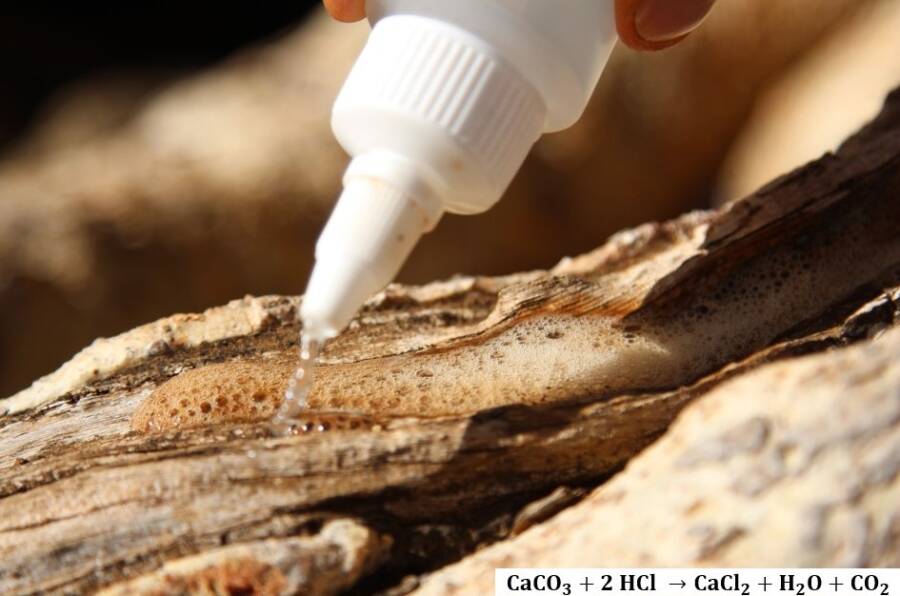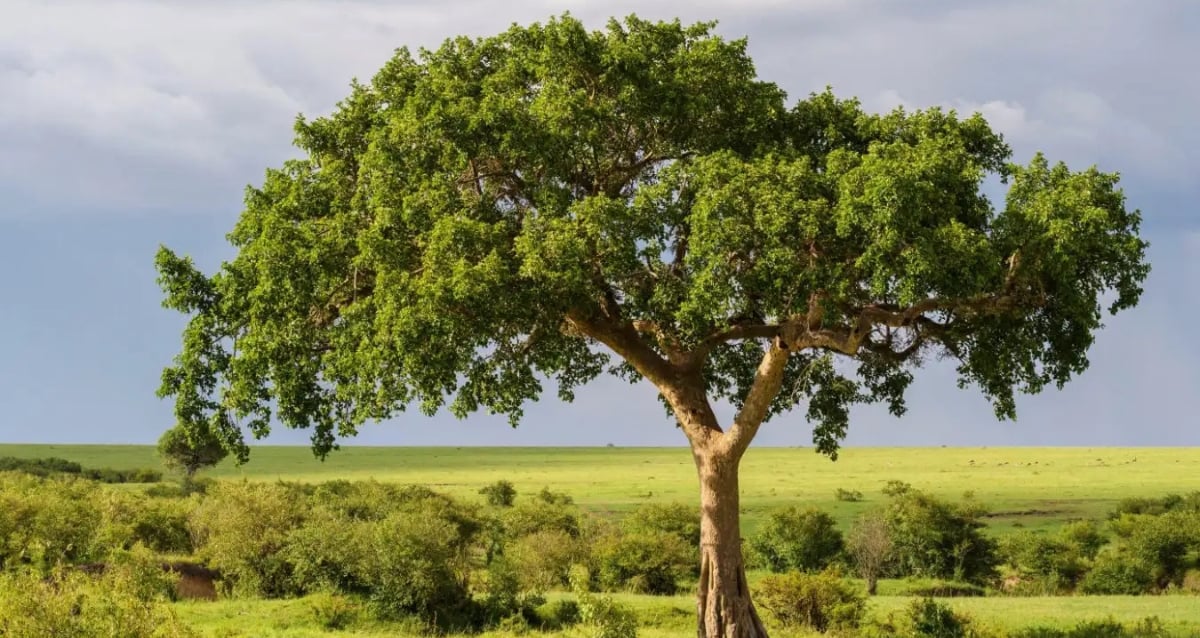Secret Fig Trees That Turn Carbon Dioxide Into Stone Could Change Climate Science Forever
Rowley and a team of international researchers focused on three species of figs: Ficus wakefieldii, Ficus natalensis, and Ficus glumosa. All three species convert carbon dioxide into limestone that becomes interwoven throughout their bark and wood, but Ficus wakefieldii performed the best.
So, why does this matter in the first place?

Mike RowleyA reaction that occurs when an acid is applied to fig tree wood indicates the presence of calcium carbonate.
“If we’re planting trees for agroforestry and their ability to store carbon dioxide as organic carbon, while producing food, we could choose trees that provide an additional benefit by sequestering inorganic carbon also, in the form of calcium carbonate,” Rowley said.
Calcium carbonate typically remains trapped in soil longer than organic carbon. Thus, planting trees that can store carbon in both ways could help slow climate change. Additionally, since the trees carrying out this process are figs, there is an extra incentive to grow them, as they produce a food crop.
“As the calcium carbonate is formed, the soil around the tree becomes more alkaline,” Rowley said. “The calcium carbonate is formed both on the surface of the tree and within the wood structures, likely as microorganisms decompose crystals on the surface and also penetrate deeper into the tree. It shows that inorganic carbon is being sequestered more deeply within the wood than we previously realized.”
Considerations For The Fig Tree’s Suitability For Agroforestry
Rowley and his teammates recently presented this research at the Goldschmidt geochemistry conference in Prague.













